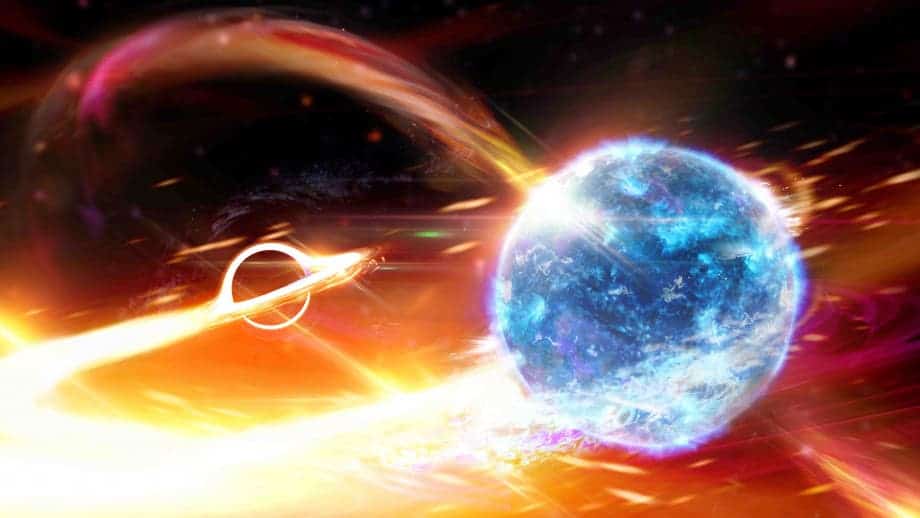We might have found the first ever recorded case of a black hole swallowing a neutron star.

Image credits Carl Knox / OzGrav Centre of Excellence.
Research led by members from The Australian National University (ANU) report detecting a black hole swallowing a neutron star for the first time on Wednesday 14 August 2019.
Big Meal
“About 900 million years ago, this black hole ate a very dense star, known as a neutron star, like Pac-man—possibly snuffing out the star instantly,” said Professor Susan Scott from the ANU Research School of Physics, who leads the General Relativity Theory and Data Analysis Group.
Both neutron stars and black holes are super-dense remnands of dead stars, and some of the most extreme forms of matter in the known universe. And now, we might have stumbled upon a merger of these two.
Earlier this month, gravitational-wave sensor arrays in the United States and Italy detected ripples in space and time which point to a previously unseen event of cataclysmic proportions — a black hole consuming a neutron star. We’re safe in our corner of the solar system, however: the event took place around 8,550 million trillion kilometres away from Earth.
Professor Scott, also a Chief Investigator with the ARC Centre of Excellence for Gravitational Wave Discovery (OzGrav), says that the discovery completes the “trifecta of observations” that the team has been striving towards: the merger of two black holes, the collision of two neutron stars, and the merger between a black hole and a neutron star.
“The ANU SkyMapper Telescope responded to the detection alert and scanned the entire likely region of space where the event occurred, but we’ve not found any visual confirmation,” she explains.
Researchers are still crunching the data to confirm the exact size of the two stellar bodies. Until the final results are published in peer-reviewed scientific journals, take them with a pinch of salt — however, preliminary data suggests it’s highly that what we’re seeing is a black hole enveloping a neutron star.
“Scientists have never detected a black hole smaller than five solar masses or a neutron star larger than about 2.5 times the mass of our Sun,” Professor Scott said.
“Based on this experience, we’re very confident that we’ve just detected a black hole gobbling up a neutron star.
“However, there is the slight but intriguing possibility that the swallowed object was a very light black hole—much lighter than any other black hole we know about in the Universe. That would be a truly awesome consolation prize.”
The data was recorded by the Advanced Laser Interferometer Gravitational-wave Observatory (LIGO), the most advanced instrument of its kind ever build that comprises twin detectors in the US, and Virgo, a gravitational-wave detector in Italy run by the European Gravitational Observatory.



